What Are the Healthiest Nuts for Snacking?
There are many types of nuts…but what are the healthiest types of nuts to eat? Learn the facts about healthy nut snacks.

On December 22, 1944, during the Battle of the Bulge, the U.S. Army’s 101st Airborne Division was under siege in the Belgian town of Bastogne by multiple German armored units. The German commander issued an ultimatum to the Americans: surrender or be annihilated. Army General Anthony McAuliffe dispatched a one-word response: “NUTS!”
That little word carried a lot of impact—the Americans went on to win the battle—just as nuts themselves deliver a lot of energy in a small package. Nuts are nutritional powerhouses, can be incorporated in a wide variety of foods, and are amazingly delicious. But what are they? Are nuts fruits? What are the healthiest nuts to eat? What are the most popular nuts? We’ve got these answers and more…
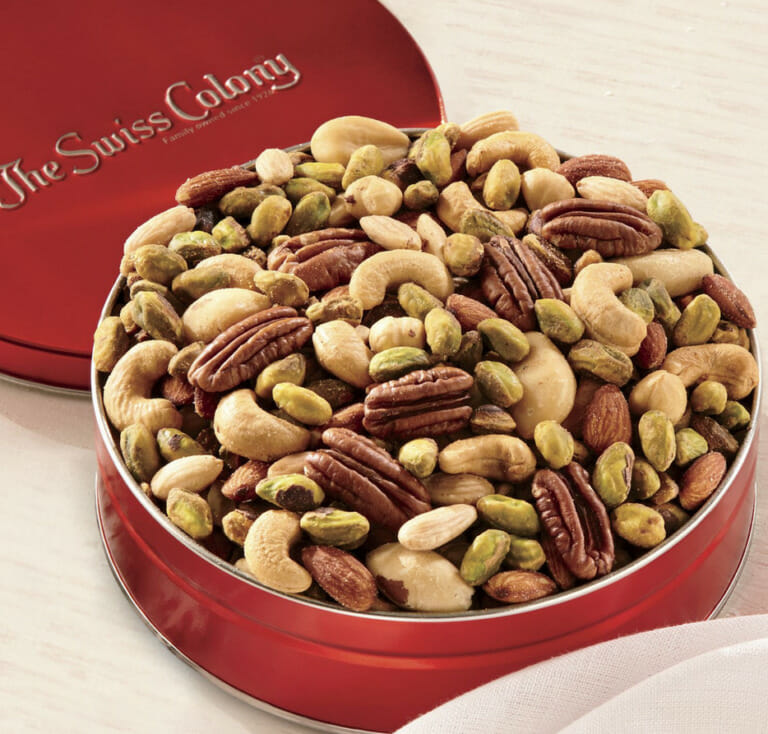
Health Benefits of Eating Nuts
The health benefits of incorporating health nuts into your diet are plentiful. Nuts are a great source of protein, vitamins, and healthy, unsaturated fats. Several nut varieties are rich in Omega-3 fatty acids. They also contain fiber, plant sterols, and l-arginine — all important to healthy eating.
In particular, nuts are great for heart health. They improve artery health, lower blood pressure, and reduce inflammation, and therefore reduce the risk of heart disease. Many nuts help lower the “bad” cholesterol (lower-density lipoprotein, or LDL) and triglycerides, which can lead to artery blockage.
As a high-energy food, nuts do contain a lot of calories due to their healthy fat content. However, numerous studies do not show nuts — and other whole foods – contributing to weight gain in the same way less-healthy, or “empty” calories do found in processed foods.
Types of Nuts
First off, yes: nuts are fruits. Unlike most fruits, in which the seed is surrounded by a (generally) edible flesh, the edible part in a nut is the seed itself; the seed is armored like a Panzer tank in an inedible hard shell that can only be breached by the jaws of a steel nutcracker or a squirrel.
There are many types of nuts. Botanically, true nuts come from trees such as the beech, chestnut, oak, and hazel. Other fruits that are not true nuts—for reasons that are interesting only to botanists—are still considered nuts because they are similar in construction and grow on trees…and for culinary purposes, are essentially the same. This includes almonds, Brazil nuts, cashews, macadamia nuts, pecans, pistachios, and walnuts. Many are drupe fruits (more closely related to cherries, apricots, peaches, and olives), yet, together with true nuts, are known as “tree nuts.”
So what about peanuts? Is a peanut a nut? Or are peanuts fruits? No, and yes. Peanuts are legumes, in the same family as beans or peas. They grow on the ground, as opposed to tree nuts like almonds or walnuts, and that is why they are called “groundnuts” in some parts of the world. The seed (the part we eat) is the fruit of the plant, as is the case with tree nuts, but peanuts grow in a softer (or at least thinner) pod like other legumes. Culinarily speaking, peanuts have much in common with tree nuts—rich in oil and a good source of protein—and are treated the same way in the kitchen. But when it comes to those fancy mixed nut gifts in decorative tins, people love to give at Christmas time, peanuts are considered filler; the truly premium blends of mixed nuts are promoted as being peanut-free.
What Are the Healthiest Nuts to Eat?
With all this talk about nutrition, what food group do nuts belong to? According to the United States Department of Agriculture’s (USDA) ChooseMyPlate.gov, nuts and seeds are part of the Protein food group. While pumpkin and squash seeds have higher protein-to-calorie ratios, the best nuts for protein are good old-fashioned dry-roasted peanuts, followed by pistachios (dry-roasted) and almonds.
So, you ask, how many nuts should I eat in a day? As with most things dietary, that depends. USDA says adult women should have 5 “ounce equivalents” of protein foods daily (5.5 for women 19–30), and men should have 6-ounce equivalents (slightly more for young men, slightly less for older men). An ounce equivalent is 1 ounce of meat, poultry, or fish, ¼ cup of cooked beans, 1 egg, 1 tablespoon of peanut butter, or ½ ounce of nuts or seeds. To reach ½ ounce of nuts, you would eat 12 almonds, 24 pistachios, or 7 walnut halves.
Many experts recommend an ounce of nuts daily (about what fits in the palm of your hand), or 2-ounce equivalents. You don’t necessarily want all of your allotted protein to come from nuts, although with the beneficial oils they contain, it would be sensible to get a portion from them.
It’s those oils, plant sterols, and other nutrients that make nuts nutritional powerhouses. A 30-year study at Harvard University “found a correlation between relatively high nut consumption (two or more servings a week) and avoidance of weight gain and obesity.” So what are the best and worst nuts for weight loss? According to EatThis.com, the best five are 1) Brazil nuts; 2) walnuts; 3) almonds; 4) pistachios, and 5) peanuts. The worst, based on the ratio of fat and calories to protein, are macadamia nuts and pecans…but remember that these still offer good fats and, eaten sensibly, can fit easily into a heart-healthy diet.
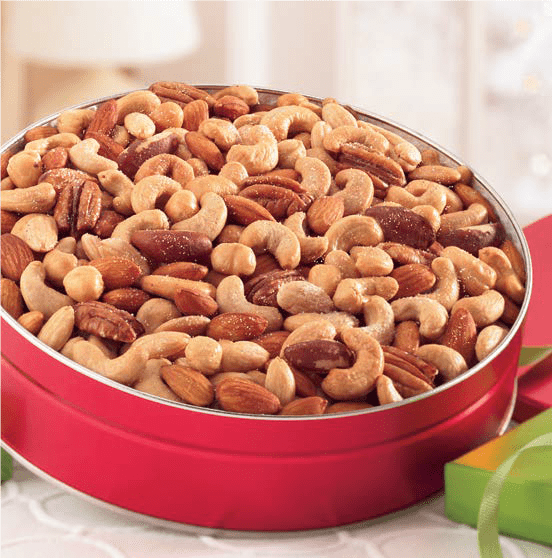
The Most Popular Nuts
Here are some of the nuts you’ll find in those mixed nut blends or sold by themselves. While there are many more, these are the most popular nuts for general snacking (not including peanuts):

Almonds: Have you noticed how an unshelled almond looks sort of like the pit of a peach, plum, or apricot? They’re related! Almonds are an excellent source of fiber and vitamin E. They also contain mono- and polyunsaturated fats, which help reduce “bad” cholesterol in our bodies.

Brazil nuts: The largest snack nuts, these come from a towering tree in the Amazon jungle. They’re nutrient-dense and contain protein, fiber, vitamins and minerals as well as monounsaturated fats.
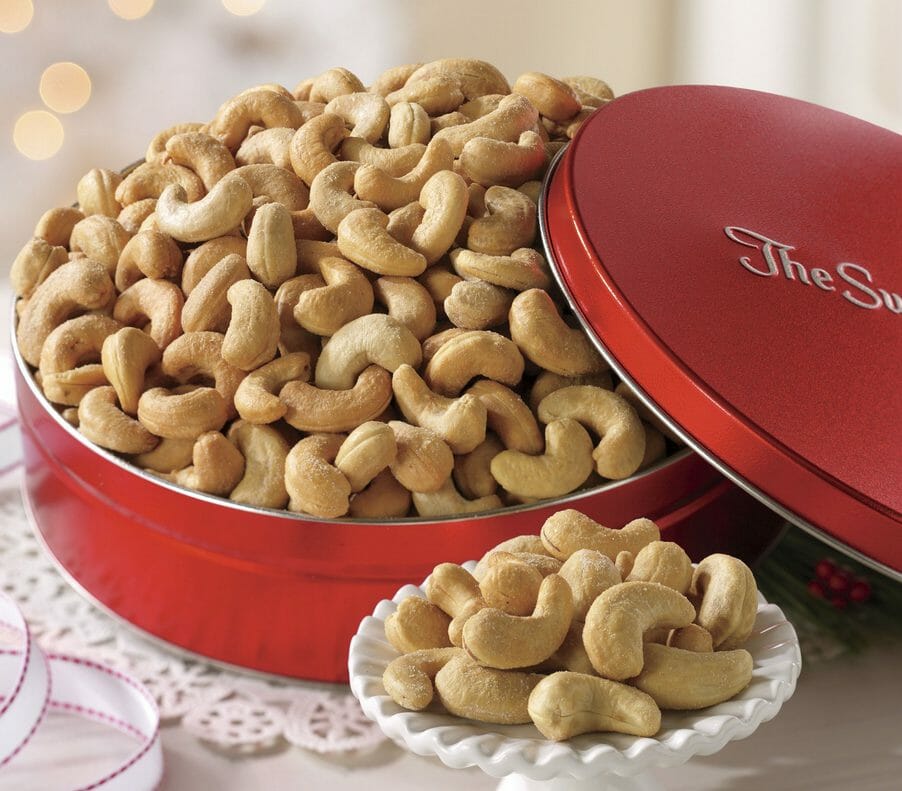
Cashews: These popular nuts come from a tree native to South America and Africa, but most today are imported from India and Vietnam. If you’ve ever wondered why they’re expensive, it’s because they have to be carefully shelled; their shells contain a poison ivy-like oil that is extremely irritating. Cashews have one of the lowest fat contents of all nuts, but a lot of their fat is saturated.

Pecans: Native to the southern United States, pecans are related to hickory nuts and look and taste like walnuts. They’re loaded with both mono- and polyunsaturated fats (and, of course, high in calories) as well as plant sterols and other nutrients.
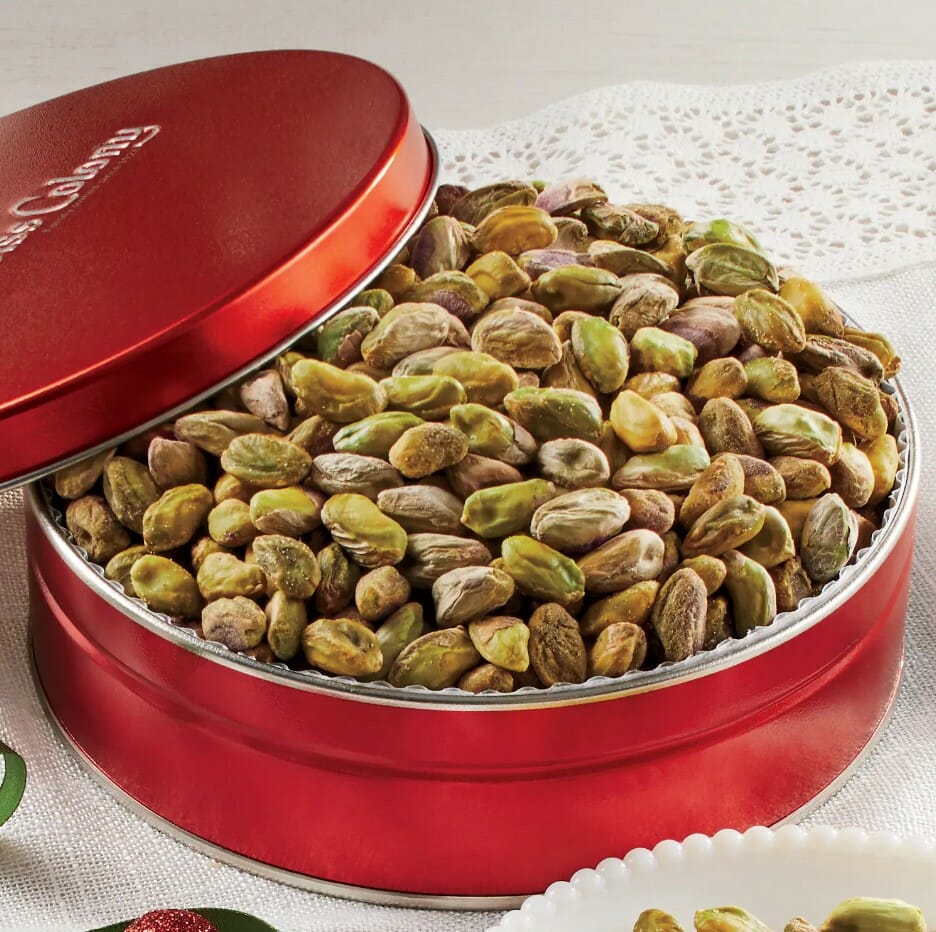
Pistachios: Botanically related to cashews (but not at all like them in appearance), pistachios are among the most popular nuts for snacking. Because they’re very easy to crack open by hand, they’re readily available both shelled and unshelled. Much has been written about the health benefits of pistachios, another excellent source of monounsaturated fats and plant sterols.

Walnuts: The black walnut is literally one of the toughest nuts to crack, which is why you rarely find them in large pieces. The most popular snack nut is the English walnut, native to western Asia and Europe and grown mostly in California. Nutritionally, walnuts are the only nuts that contain significant amounts of alpha-linolenic acid (ALA), a healthy omega-3 fatty acid.
Hazelnuts: The fruit of the hazel tree, hazelnuts are also known as filberts, the traditional garnish of a vodka or gin gimlet. They’re much healthier without the alcohol, of course; hazelnuts may help lower HDL cholesterol through substances called plant sterols as well as a high monounsaturated fat content.
Macadamia nuts: Named for Dr. John Macadam in their native Australia, these extremely rich nuts are higher in fat and calories than any other nut…but boy, are they delicious. They’re typically eaten for dessert, or made even richer by coating them in milk chocolate. One thing they have going for them nutritionally is that they have been shown to reduce total and LDL (bad) cholesterol.

Since nuts are relatively diverse in flavor, nutrient content and health benefits, one of the best ways to enjoy them is in an assortment of mixed nuts.
How to Store Nuts
How do you store these storehouses of nutrition? Can you freeze nuts? The answer is: absolutely! In fact, if you’re not eating them right away, the best place to store them is in the freezer. Because of their high oil content, nuts can go rancid fairly quickly. To freeze them, just wrap them well in plastic, then put them in a resealable freezer bag.
Of course, if you’re anything like us, those nuts won’t be around long enough to go bad. They’re not just for desserts; incorporate them into your diet by trying new recipes like pesto or romesco sauce, or just break them out to share a heart-healthy snack with friends and family. You’ll find nuts can be an exciting part of a healthy diet.
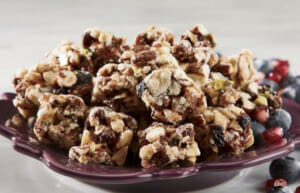
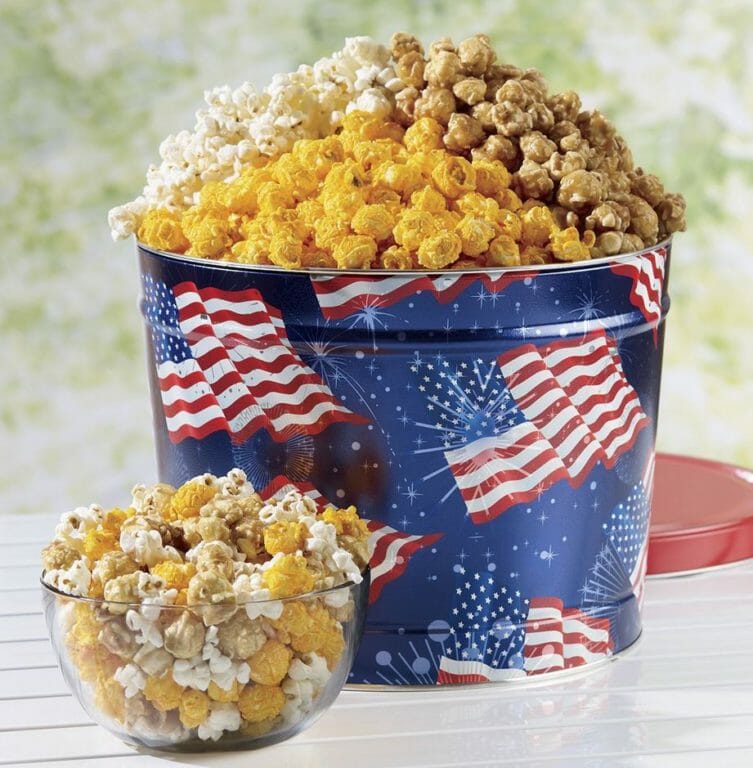
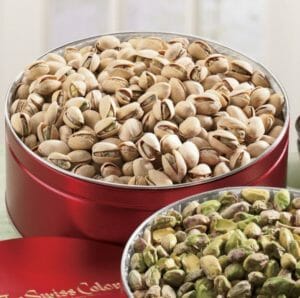

Comments (12)
Henry
What’s your nutrient info on your jumbo cashews? You should have it posted on the web site & on the products. Thanks!
The Swiss Colony
Hi, Henry! Send us an email at socialcs@sccompanies.com and we will be able to help you there. 🙂
Val
thank you for this great information about nuts!
Komal Jha
Dry fruits are not just healthier snacks but tasty too. This pack of a healthy mixture of Dryfruits and nuts is there to help you out. It is a rich source of nutrients and can even be taken if you are on your diet.
Also let me inform you with my favourite Dryfruits-
Dried apricots are higher in most nutrients than fresh apricots. A serving of 5-6 dried apricots has more than four times the fiber than a whole fresh apricot. Fiber helps lower your risk of heart disease, diabetes, and some types of cancer. Dried apricots also have more potassium, iron, and calcium.
Cynthia Maende
In Uganda, we have a healthy rare one called oysternut/ telfairia pedata. Creamy, it helps with fertility, helps healing after child birth, and helps flow of breastmilk in new moms.
Nancy Fiore
Great article! Very enlightening! Instead of cookies
For Christmas NUTS it will be for my senior friends!
Thank you, a loyal customer.
Brian Bender
I found the distinction between fruit and seed fascinating, and the storage info was very helpful! I also want to add that several nuts are excellent sources of B-vitamins, and many are full of essential minerals like magnesium, manganese, phosphorus, zinc, and copper. Great article!
Rhonda
Great information! We always have family members who are closely following their diets and ask about the tasty food we have at Christmas.
Steve
What is the best nut to use in Pestos? I’ve always used pine nuts in a Basil pesto, so does the nut you use, depend on the type of Pesto your making?
severson
I’ve had really good luck with walnuts. I tend not to use pine nuts anymore, since the vast majority nowadays come from China.
Stephenson
Actually some of tastiest pine nuts I’ve ever had come from China, but be sure to buy those from Mongolia – those are the ones harvested from the rough and are sure to be free of unwholesome stuff! I can’t vouch for those from elsewhere in China but I’m sure there’s other good sources as well
Georgia Woodard
Great information, that info should be included in each nut package you ship.
“THINK ABOUT IT”
I believe you would have more repeat sales, in the nut verity, especially when your customer is sending to a friend or relative with health problems. I work in the health field and I know I will consider that when sending a food gift package.